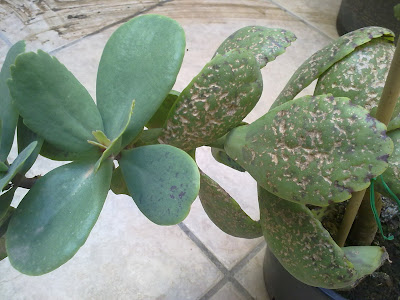 |
| With so many containers to choose from, how do you choose the right one? |
In this article I would like to share what I have learnt about the different types of containers out there and how the choose the best one for your plants. I have been through several containers in the last couple of years, so I decided to compile a list of the different varieties and their uses.
When buying a new plant from the nursery, it is important to gather some information about the plant. The people at the nursery
can give you some basic care instructions, and if you are given the plant as a gift, you should at least get to know the name of the plant, so you can do your own research. One of the most important features of a container plant, and one that is often overlooked, is the type of container that is most suitable for the plant.
Containers are not just for show. They will be your plant’s home for many years to come, so it is very important that they are the right shape, size and material for your plant. It is advisable to replace the container once you buy a plant from the nursery. The original containers are temporary, and the nursery is more concerned about saving space.
The most common types of containers are made of terra cotta, ceramic or plastic. The type you use depends on the plant. Terra cotta containers that are not glazed on the inside retain a lot of water. The material acts like a sponge, stealing moisture from the soil and your plant. Plants that do not require a lot of water, such as cactus or succulents, are ideal for this type of container. Plants that require a lot of moisture need to be watered more frequently, when placed in these types of containers, to prevent under watering.
When buying terra cotta containers for the first time, it is always best to soak them in a tub of water for a few hours. The material will be very dry the first time, and a good soak helps it to
stabilize. This prevents the container
from stealing too much moisture from the soil in the first few days.
Plastic and glazed ceramic containers are completely waterproof. When using these types of containers, care must be taken
not to over water the plants. As with any container, drainage is necessary to remove the excess water from the soil. Without proper drainage, you will run the risk of root rot, as the roots that are left in too much water start to rot, eventually killing the plant.
Another important factor when buying containers is the size. You should never buy a pot that is too big, or too small for your plant. Check the size of the original container, and always go for one or two sizes bigger. Placing a small plant in too much soil can also lead to root rot, as the soil takes a long time to dry. This needs to be observed every time a plant is repotted to a bigger container, and not just the first time. If you are planting a lot of different plants in one pot, make sure the size you choose can fit all the containers inside it. This will prevent you from buying a pot that is too small.
The last thing to observe, when choosing a container, is the shape. There are shallow containers, and deep containers, and there is a reason for this. Some plants have roots that go very deep, but they do not spread very much. A narrow and deep container is more suited for these plants. Others, however, have roots that are shallow, but they spread out over a large area. In this case, a shallow and wide container is the better choice.
Choosing the wrong shape can also be detrimental to your plant. If a plant has shallow roots, and it is planted in a deep container, the water will settle at the bottom of the container where the roots cannot reach. This may leave the plant thirsty. In these cases, it is always best to check the top soil for dryness, instead of the weight of the container. The moist soil at the bottom can make the container appear heavy, but the plant needs watering. On the other hand, when a plant with deep, narrow roots is planted in a shallow container, it can become root-bound, and stunt its growth.
You may find that the fancy containers, which are coloured in a multitude of ways, come in a limited selection of shapes and sizes. If the plant is going to be kept indoors, and you would like a better-looking container,
it is a good idea to buy an appropriate pot that will house the plant, and then put that inside the fancy, bigger container. That way, the plant will benefit from a proper container, and you can show it off any way you like.



















